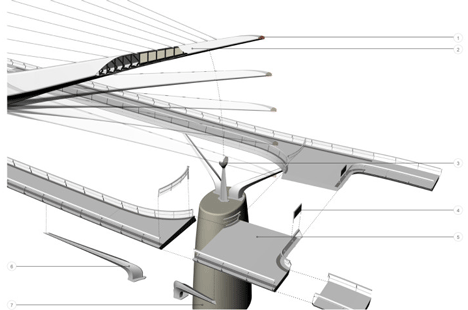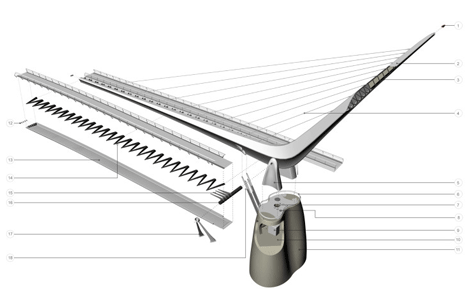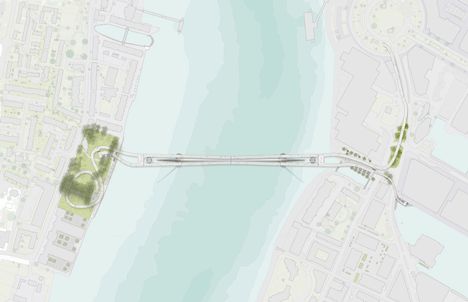London's first opening pedestrian and cycle bridge proposed for Canary Wharf
London studio reForm Architects has revealed plans for an opening bridge that would allow both pedestrians and cyclists to travel across the River Thames between Canary Wharf and Rotherhithe (+ movie).
Proposed with engineering firm Elliott Wood, the 184-metre bascule bridge is designed to open in the middle to allow boats to pass through – similar to the landmark Tower Bridge further upstream.
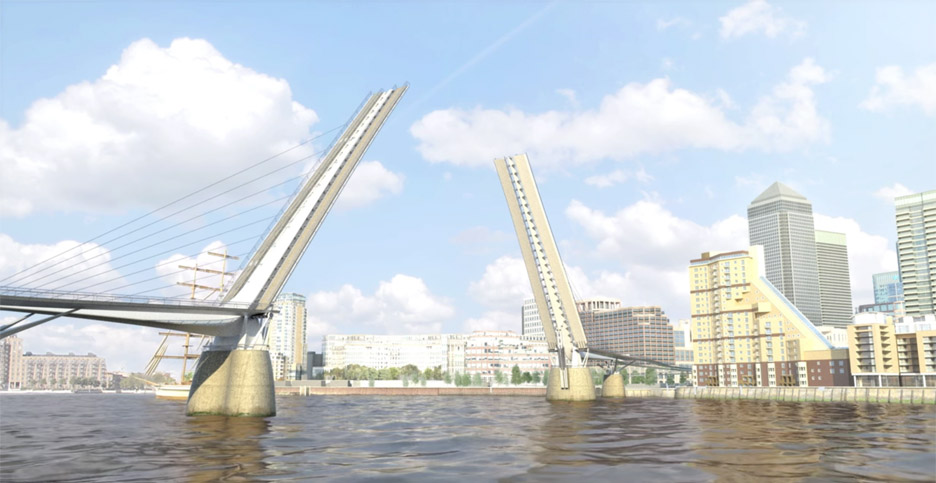
The bridge would be the first opening bridge to be built on the River Thames since Tower Bridge in 1894, and the first dedicated pedestrian and cycle bridge to cross the river.
The Foster + Partners-designed Millennium Bridge from St Paul's Cathedral to Bankside currently provides the city's sole pedestrian-only crossing, but no bikes are allowed. The winner of competition to design another pedestrian and cycle bridge for Nine Elms to Pimlico is expected to be announced next week, but the project stills requires funding before it can go ahead.
ReForm's design is planned to connect the financial district of Canary Wharf in the north with the Rotherhithe residential area on the other side of the river.
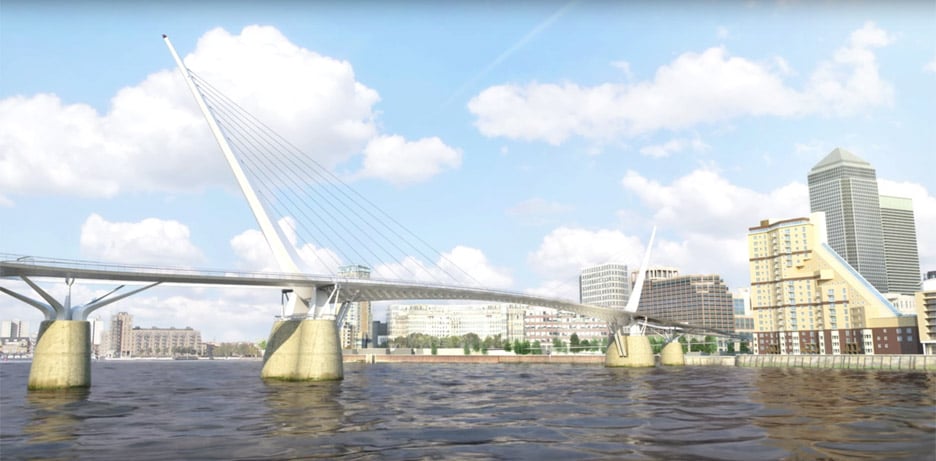
"People working at Canary Wharf and travelling by bike or foot from the south will no longer be faced by lengthy detours to Tower Bridge and Greenwich Foot Tunnel or the undesirable passage presented by the Rotherhithe Tunnel," said a statement from the architects.
ReForm's design features a five-metre-wide track on either side for users travelling on bicycles or on foot, and waiting areas at both ends for when the bridge opens up.
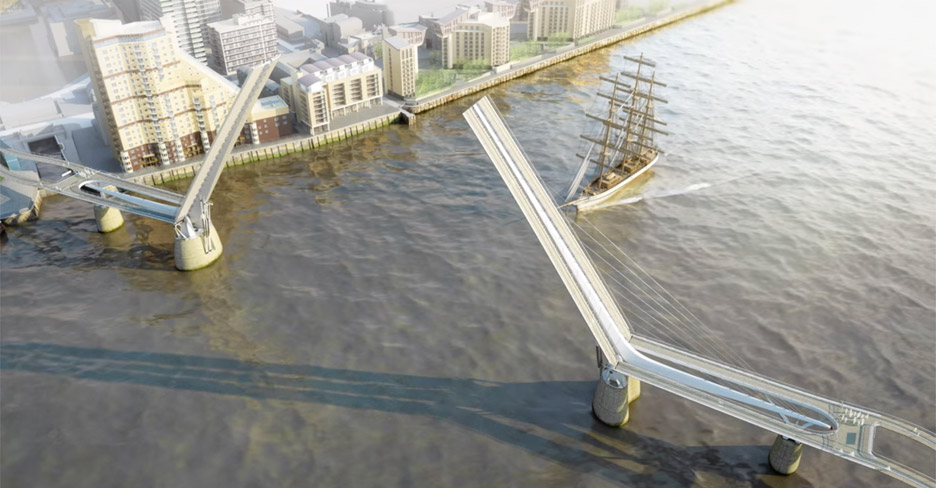
The central, openable portion of the deck would be held up by suspension cables connected to angled upright elements.
These sections of the deck would pivot on their structural supports in the water, so the uprights swing down into the gaps between the tracks.
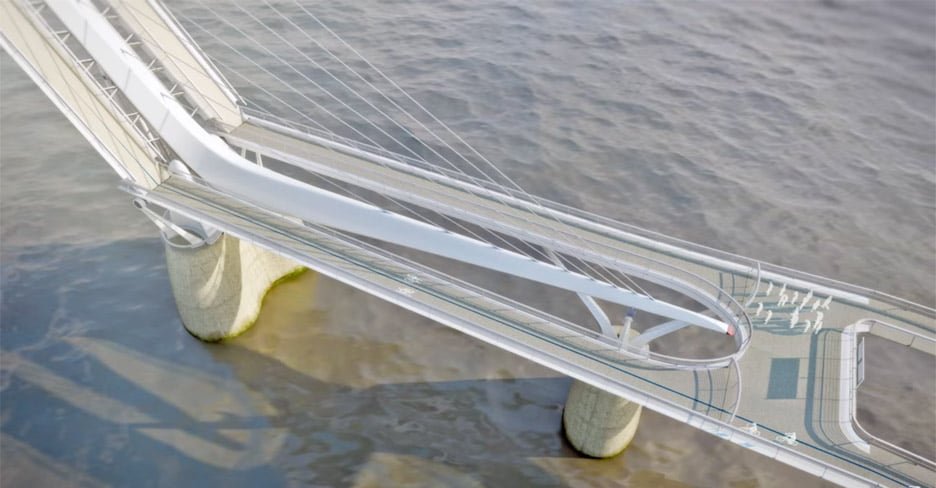
"Any new bridge across the River Thames must respond to the significance of its setting, and add to its culture and heritage," said reForm founder Nik Randall.
"Our design will do this, creating an internationally recognisable landmark. Its unique and elegant form and operation will become an attraction for visitors. It will enhance the views along and across the Thames, providing scale and interest in the way that the ships on the river itself do."

The bridge was designed as a feasibility study, prepared for consultation with Transport for London, London Underground, the Port of London Authority and the Canal & River Trust.
"The feasibility study has been produced in response to significant demand in south-east London for a pedestrian and cycling link to the north of the city, which would serve to cut commuting times and congestion on other parts of the transport network and reduce pollution," said the architects.

Construction is estimated to cost £88 million and take four to fives years for completion. Financial and political backing is required before the project can be developed further.
"This is a hugely complex engineering challenge that we are delighted to be involved with," said Elliott Wood director Gary Elliott. "The bridge is fitting for such a significant location and would deliver tremendous benefits for Londoners. Not only in improving connectivity between the currently underserved area of Rotherhithe and the north bank of the river, but by offering pedestrians and cyclists a dedicated crossing that is safe and enjoyable to use."
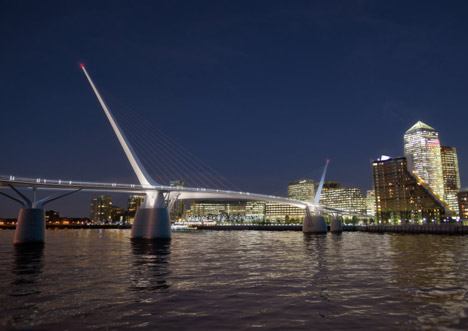
Thomas Heatherwick has also proposed a pedestrian bridge across the Thames. The controversial Garden Bridge would connect Temple with the Southbank, but has hit several hurdles on its journey towards planning approval.
